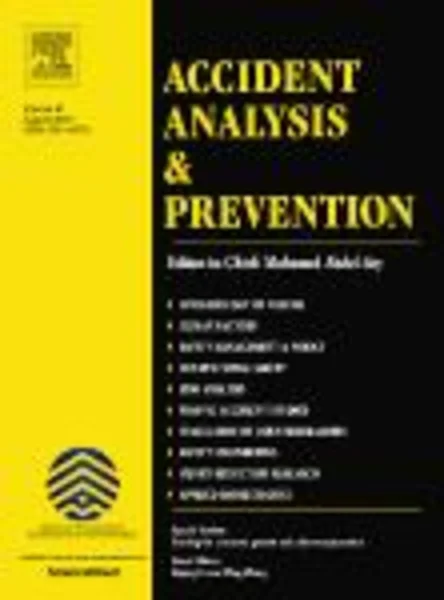-
examining the effects of site selection criteria for evaluating the effectiveness of traffic safety countermeasures
جزئیات بیشتر مقاله- تاریخ ارائه: 1392/01/01
- تاریخ انتشار در تی پی بین: 1392/01/01
- تعداد بازدید: 717
- تعداد پرسش و پاسخ ها: 0
- شماره تماس دبیرخانه رویداد: -
the primary objective of this paper is to describe how site selection effects can influence the safety effectiveness of treatments. more specifically, the goal is to quantify the bias for the safety effectiveness of a treatment as a function of different entry criteria as well as other factors associated with crash data, and propose a new method to minimize this bias when a control group is not available. the study objective was accomplished using simulated data. the proposed method documented in this paper was compared to the four most common types of before–after studies: the naïve, using a control group (cg), the empirical bayes (eb) method based on the method of moment (ebmm), and the eb method based on a control group (ebcg). five scenarios were examined: a direct comparison of the methods, different dispersion parameter values of the negative binomial model, different sample sizes, different values of the index of safety effectiveness (θ), and different levels of uncertainty associated with the index. based on the simulated scenarios (also supported theoretically), the study results showed that higher entry criteria, larger values of the safety effectiveness, and smaller dispersion parameter values will cause a larger selection bias. furthermore, among all methods evaluated, the naïve and the ebmm methods are both significantly affected by the selection bias. using a control group, or the ebcg, can mutually eliminate the site selection bias, as long as the characteristics of the control group (truncated data for the cg method or the non-truncated sample population for the ebcg method) are exactly the same as for the treatment group. in practice, finding datasets for the control group with the exact same characteristics as for the treatment group may not always be feasible. to overcome this problem, the method proposed in this study can be used to adjust the naïve estimator of the index of safety effectiveness, even when the mean and dispersion parameter are not properly estimated.
مقالات جدیدترین رویدادها
-
استفاده از تحلیل اهمیت-عملکرد در ارائه الگوی مدیریت خلاقیت سازمانی و ارائه راهکار جهت بهبود
-
بررسی تاثیر ارزش وجوه نقد مازاد بر ساختار سرمایه شرکت های پذیرفته شده در بورس اوراق بهادار تهران
-
بررسی تأثیر سطح افشای ریسک بر قرارداد بدهی شرکت های پذیرفته شده در بورس اوراق بهادار تهران
-
بررسی تأثیر رتبه بندی اعتباری مبتنی بر مدل امتیاز بازار نوظهور بر نقد شوندگی سهام با تأکید بر خصوصی سازی شرکت ها
-
تأثیر آمیخته بازاریابی پوشاک ایرانی بر تصویر ذهنی مشتری پوشاک ایرانی (هاکوپیان)
-
شبیه سازی تبخیر با استفاده از مدل های فازی عصبی و مقایسه آن با مدل های سری زمانی (مطالعه موردی: دشت جم)
-
کاربرد جدول عمر در برآورد طول عمر و عوامل موثر بر آن در سرطان مری
-
تأثیر تحریک الکتریکی با فرکانس پایین بر اکتساب کیندلینگ و انتقال سیناپسی در شکنج دندانه دار موش صحرایی
-
گزارش یک مورد سندرم نورولپتیک بدخیم ناشی از مصرف ریسپریدون در افراد با ریسک پذیری پایین
-
ranking of the competitive service quality factors using fahp and fuzzy topsis techniques
مقالات جدیدترین ژورنال ها
-
مدیریت و بررسی افسردگی دانش آموزان دختر مقطع متوسطه دوم در دروان کرونا در شهرستان دزفول
-
مدیریت و بررسی خرد سیاسی در اندیشه ی فردوسی در ادب ایران
-
واکاوی و مدیریت توصیفی قلمدان(جاکلیدی)ضریح در موزه آستان قدس رضوی
-
بررسی تاثیر خلاقیت، دانش و انگیزه کارکنان بر پیشنهادات نوآورانه کارکنان ( مورد مطالعه: هتل های 3 و 4 ستاره استان کرمان)
-
بررسی تاثیر کیفیت سیستم های اطلاعاتی بر تصمیم گیری موفق در شرکتهای تولیدی استان اصفهان (مورد مطالعه: مدیران شرکتهای تولیدی استان اصفهان)
-
تأثیر عوامل عاطفی بر واکنش های رفتاری مشتری به تبلیغات شخصی شده آنلاین با نقش میانجی مولفه های نظریه انتخاب عقلایی
-
بررسی نقش تحقیق و توسعه در ویژگی های کارآفرینی کارکنان شرکت ایران خودرو شهر تهران
-
ملاک های سلامت معنوی در پنج ساحت انسان مبتنی بر آموزه های قرآن
-
ارتباط تعامل آمیز سبک زندگی اسلامی با ویژگی های شخصیتی
-
دانشگاه، اخلاق مداری و کارآفرینی




سوال خود را در مورد این مقاله مطرح نمایید :